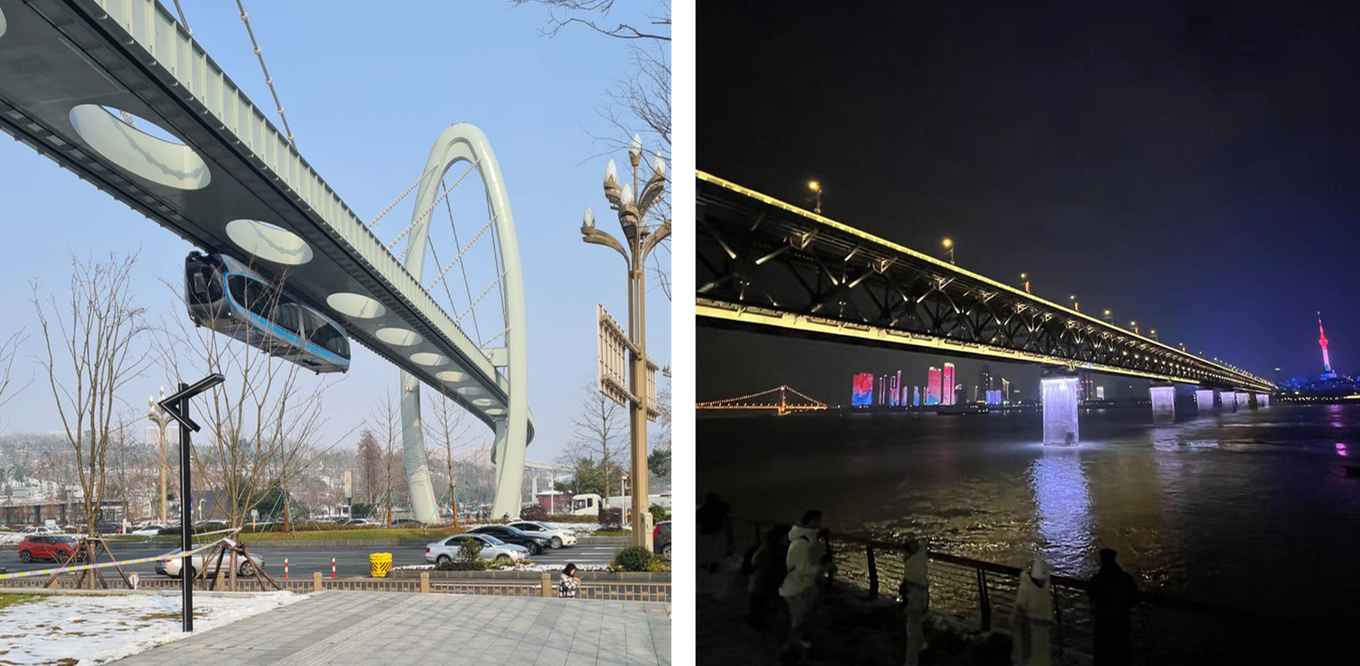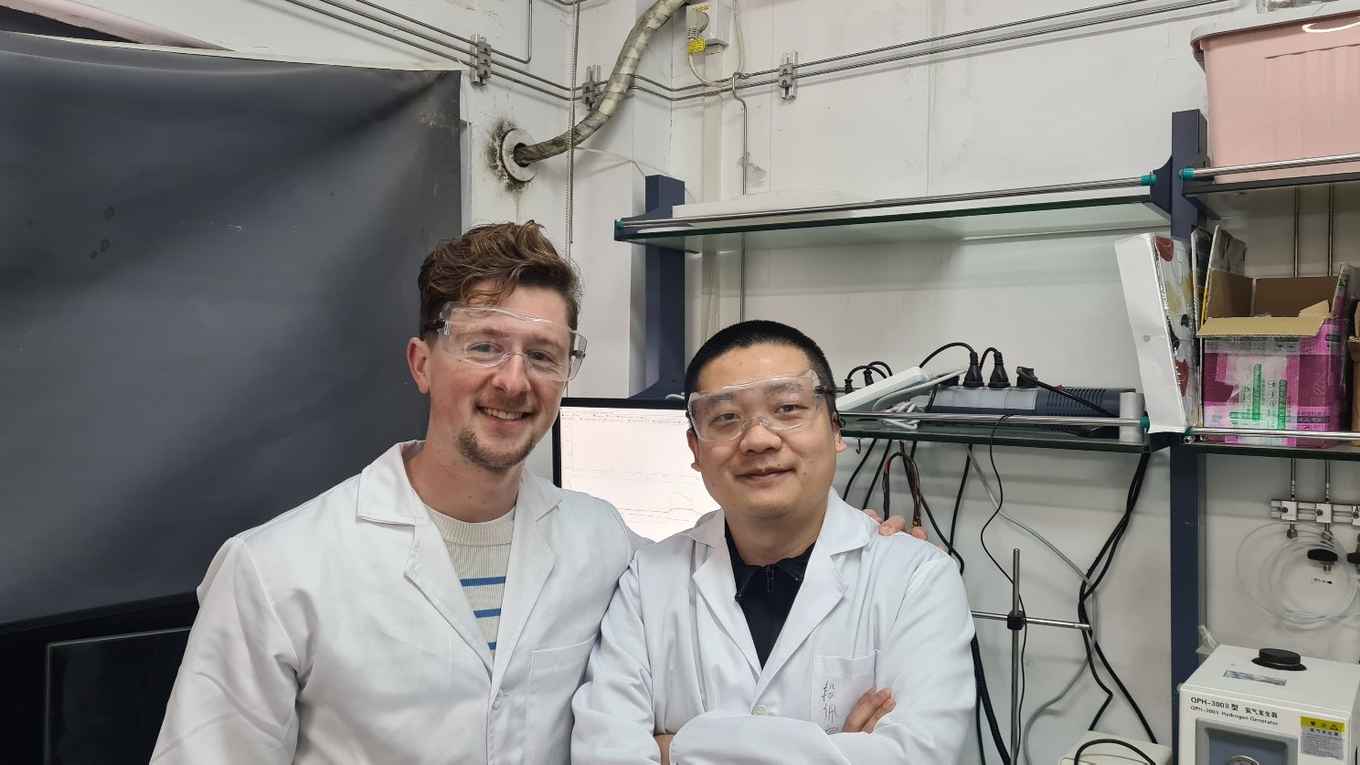An enriching experience in Wuhan
Travel Report Martijn Mekkering
I was really pleased with my arrival in Wuhan. I was awaited by some students of Prof. Ning Yan, my PhD mentor and also my host in Wuhan. Kai Zhao, Yuchen Liu and Le Ke are really friendly people and they were really helpful – they took my suitcases without hesitation and bought my metro ticket to my hotel for the first night. The next morning the students showed me to my room at the campus and helped me with the communication with my landlord. They showed me around the campus and I was amazed to see supermarkets, hospitals and even banks inside the university grounds. It was all surrounded by a gate which you could only enter by biometrical authentication. Very advanced and very secure compared to our easily accessible Science Park in Amsterdam.

Introduction to Wuhan
Wuhan is a vast metropole. I looked up the dimensions of it before going there. The urban Wuhan is ‘just’ a little bit bigger than Los Angeles (roughly 1.200km2!) and has almost two million people (1200 people/km2). Outside this area is still Wuhan, but less densely populated (seven million people). For comparison, Amsterdam has 5000 people/km2. Wuhan is thus very large but it is easy to go around as it is not that dense. There are many fifty-story skyscrapers scattered everywhere over the city to accommodate this enormous amount of people. Wuhan people these days are familiar with westerners, but in the suburbs I was looked at by a lot of people. Nevertheless, they treated me with sincere respect and were always really helpful. If I was at a metro station and looked around not knowing where to go, sometimes people came up to ask me whether I needed help finding my way.
And, indeed, if you want to go anywhere in Wuhan, it’s easiest by metro. Fast and cheap – it costs the equivalent of 1 euro to travel 15 km by metro. Just make sure you get out of the metro every now and then to enjoy the beautiful views of Wuhan. Especially at night, when e.g. the Yellow Crane Tower lights up with lasers. Something also very unique about Wuhan is the metro skyrail and the many bridges it has.

Have fun and do great science
Prof. Ning Yan was really helpful and wanted me to have a lot of fun in China and do great science meanwhile. He also took me to lunches and dinners together with his group. Ning and the students made me feel very welcome from the very start. Xièxiè to all of you (thank you in Chinese).
Eventually, I worked on a project linked to my own projects. It was about single-atom and dual-atom catalysts and studying their performance in an advanced electrochemical machine that can study gas formation during the reaction. The idea was to see whether there were any significant differences in the evolved gasses during the oxygen evolution reaction, to prove the stability of my catalyst.

A really large campus
I couldn’t believe my eyes when I arrived. The campus is huge! Big does not necessarily mean good of course, but it has a lot of facilities and if you need something, you can be sure you can find it on campus. I had no idea where to be, but the students did and always helped me, without hesitation. This was true hospitality I have never seen before and that made my time in Wuhan really nice. It is something I will definitely bring back with me to the Netherlands.
Going to the university and getting around for e.g. lunches takes quite a lot of time. I therefore thought it was a good idea to rent a scooter (like everyone does here). It is the bicycle-analogue of the Netherlands in China. To my surprise nearly all scooters and bikes in Wuhan are electric. I managed to rent one for roughly 70 euros for 3 months. It had to be recharged every 3 days, but this was not a problem because there are charging stations everywhere. Besides that, charging costs only 30 cents. I was able to get around quite easily. The first time I drove my scooter I was utterly confused outside the campus area. The bikes fly around at 40 km/h and go against traffic?! Many car drivers sound the horn, and the number of cars is exceeded by bikes. This is the Wild East!
Visiting the physics and technology building
After arriving at Wuhan University and settling in, I gave a lecture about my research at the University of Amsterdam. The students were very interested and asked a lot of critical questions. I explained what I wanted to do here at Wuhan University and after some discussion with Prof. Yan I was more than happy to start.

Working life at Wuhan University
I tried to adopt a different lifestyle here in Wuhan to see if I can find a way to optimize this for myself in the future - one of the great benefits of seeing a different culture. I only experienced western culture thus far, so I thought this was a unique experience. The students seemed to be working day and night, they simply did not really stop. Of course, quite some time was spent on lunches and dinners. For us westerners that goes outside working hours, but in China they integrate everything together. I was very happy to adopt this mindset and join them on the lunches and dinners. I worked from 9 until 9 and after that I spent some time reading a book or grabbing a drink somewhere nearby. It was very easy to live this way, as everyone did it. I also did not really hit a culture shock even though it was my first time in Eastern culture. Moreover, there are various bars in the Wuchang district (where Wuhan University is located) with live bands. It was very convivial for a foreigner to be in. In the morning I got my typical hot-dried noodles (Wuhan specialty) and went to work.

I also wanted to explore China besides Wuhan University. Luckily, transportation in Wuhan and China is insanely good. China has a modern and well-organized high-speed railway system (the average speed is 300 km/h) which makes travelling feel very easy. I covered a distance of 1500 km in approximately five hours. In European equivalents, that is taking the train from Amsterdam to Rome – which cost me around 100 euros. During a trip for just two days I visited many places, from truly unique nature in Zhangjiajie to the Great Wall in Beijing and the Bund in Shanghai.
Luxurious facilities in China
I was really curious about getting a haircut in China. I don’t think Chinese people are used to cutting curly western hair (the traditional Chinese has straight hair). I came into a shop with a picture in my hand explaining how I wanted it. Within 10 minutes I was done and happily surprised with the result. It costs 12 RMB which translates to 1.5 euros. I honestly cannot even buy a sandwich or a stroopwafel for that in Amsterdam. Then after, I tried a popular ear massage here in Wuhan. I think I felt a bit confident after the haircut to do this. Anyhow, me and my friend had a truly unique experience (in a good way).
Martijn Mekkering,Wuhan, 01 March 2024.